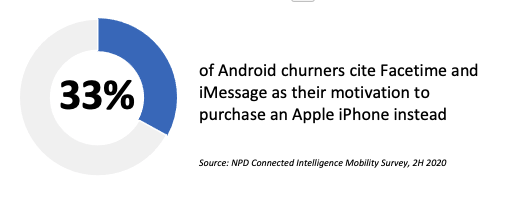
Moto G Stylus gets 5G Upgrade
Motorola last week announced the 5G upgrade to its popular Moto G Stylus phone. The new G Stylus 5G, like its predecessor, boasts a large 6.8-inch display, but the OEM has made some significant changes under the hood. The new phone replaces the predecessor’s 4,000 mAh battery with a 5,000 mAh, while downgrading the silicon engine. The new Stylus 5G runs on Qualcomm’s entry-level Snapdragon 480 series versus the Snapdragon 678 in the 4G model. Motorola also made some hardware design changes by moving the fingerprint reader from the side of the phone to the back, while modifying the stylus that now has a full cyclinder shape versus an oval shape that required users to slot it into the stylus hole in a precise angle. Motorola futher improved the stylus-centric software including a custom navigation bar appearance (for the apps utilizing the stylus) when the stylus is removed from its slot. The unlocked version of the new Motorola G Stylus 5G is commercially available beginning today via Motorola.com, Best Buy and B&H. The OEM announced that a carrier-locked version will soon be available at AT&T, Cricket, T-Mobile, Metro, Boost, Xfinity, and Spectrum Mobile.
The NPD Take:
- Motorola’s decision to copycat LG’s popular Stylo series has already proven to be a success as it has made the G Stylus de facto alternative for the Stylo fans who can no longer purchase another Stylo following LG’s bail out from the market. The upgraded G Stylus 5G will help Motorola enjoy mass exposure given carrier partners’ high motivation to migrate users from 4G to 5G networks.
- The Motorola G Stylus 5G is a sub-6 MHz device, hence the exclusion of Verizon from the list of carrier partners. 5G mmWave device requirement,s such as additional antennas, challenge OEMs in meeting price objectives at a time when component prices are on the rise due to supply shortages. While the omission of the G Stylus 5G will not have a major impact in Verizon’s device lineup competitiveness, missing out on more mid-tier and low-end 5G models due to mmWave requirements may adversely impact its device marketing effectiveness in the long run.
Apple lets FaceTime crack the walled garden
For Apple fans, early June is the beginning of festive season as they are lured by Apple’s latest and greatest software inventions at WWDC. This year’s developers’ conference was no different with Apple launching upgrades to its operating systems (the new iOS 15, WatchOS 8, iPadOS 15 and etc.) and showing a ton of enhanced software capabilities in the areas of health, navigation, privacy, voice control (Siri) and others. Of all the announcements, the one that caught our attention the most is Apple’s decision to extend its popular FaceTime video/audio calling application to non-Apple platforms. FaceTime calls can currently be done only among iPhone, iPad and Mac devices, and Apple will soon allow users of Android phones or Windows devices to join a FaceTime call. The system will work similar to a Zoom call where participants will receive a link to join the conversation via a web browser. There will not be a native FaceTime application designed for non-Apple platforms. The new capability will go live when the Apple initially releases the beta software for developers followed by the actual OS upgrade for all users.
The NPD Take:
- While we applaud Apple’s decision to lower the barriers of group video calls for non-Apple users, it is important to highlight that uniting with friends/family (43%) and have access to FaceTime/iMessage (33%) are cited as the top reasons for Android customers jumping ship to go over the iOS side. Allowing Android customers join FaceTime calls may lower the motivation of potential Android churners.


